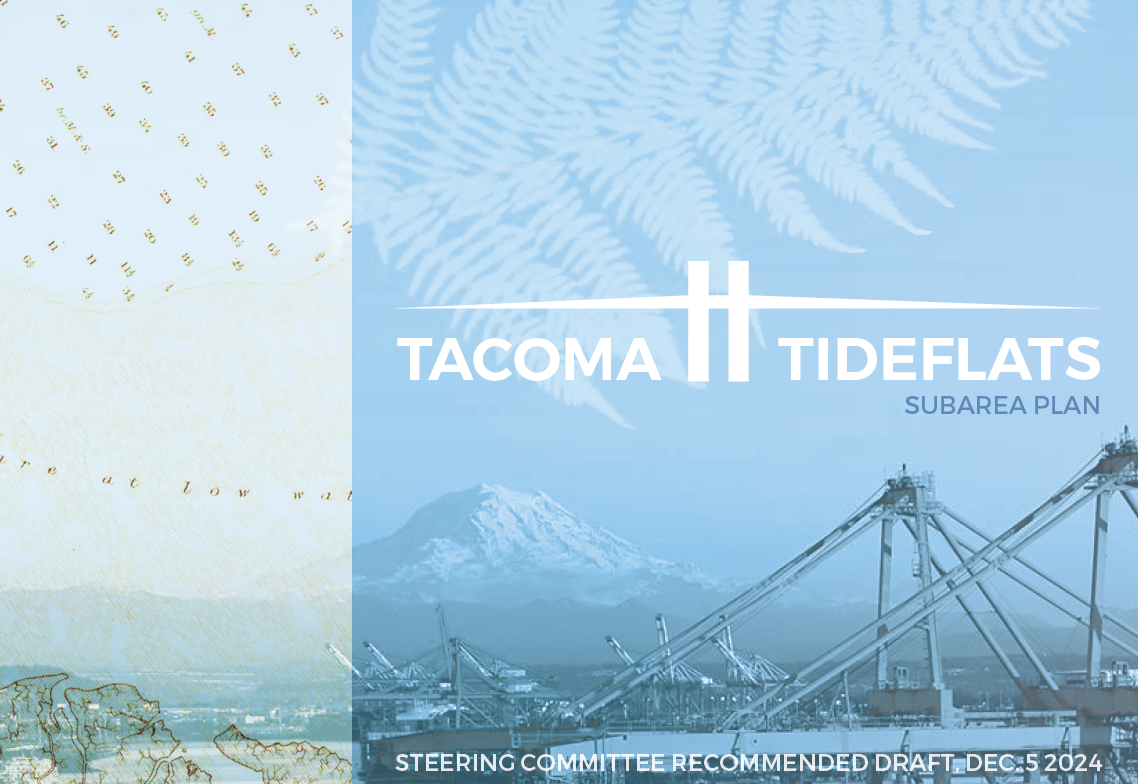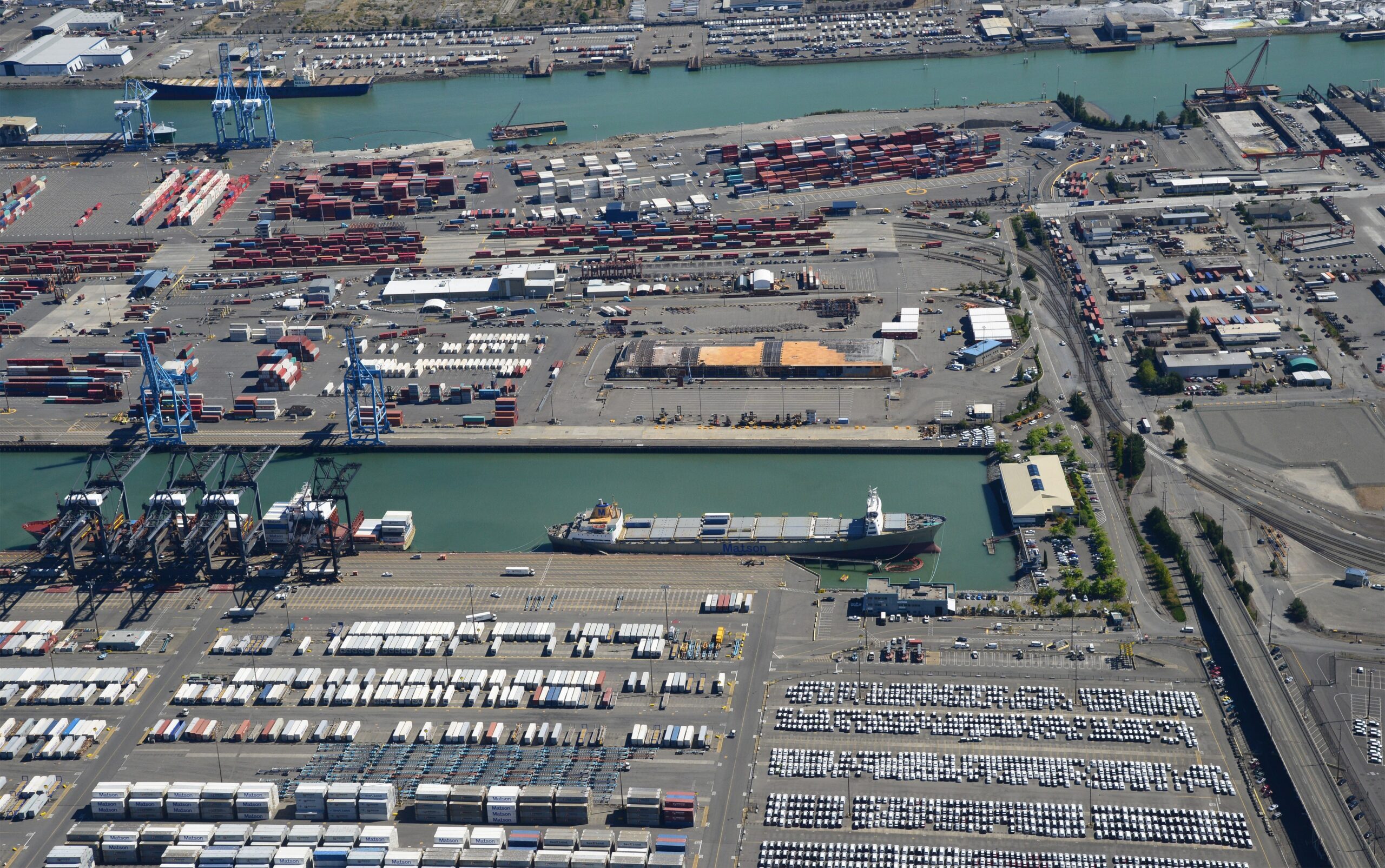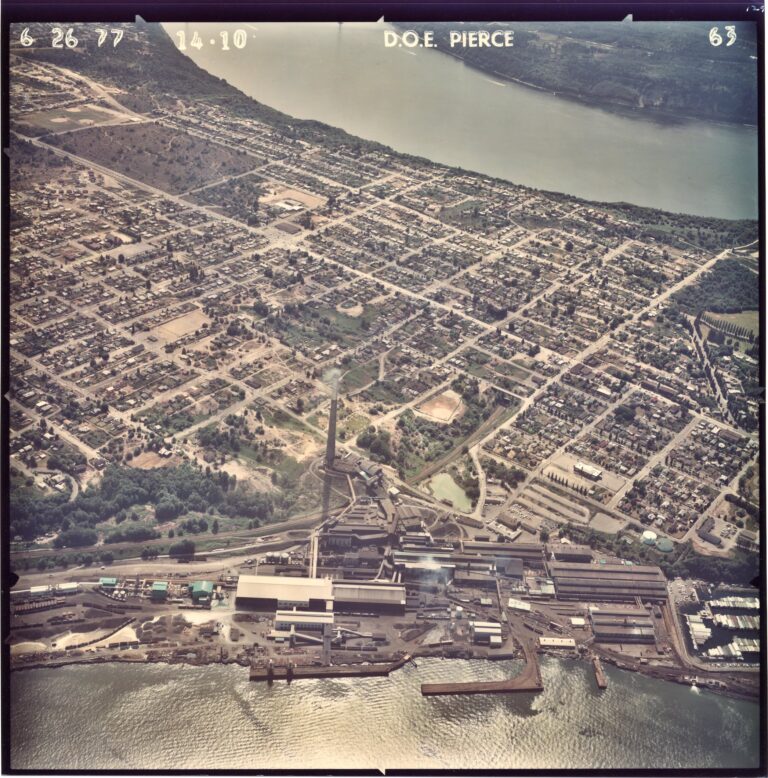One of the largest recent civic projects involving the Puyallup Tribe and the City of Tacoma opened the doors to public comment this month. The Tacoma City Council held a meeting in the Council Chambers at the Tacoma Municipal Building on June 4th, to hear community feedback on the recently published Tideflats Subarea Plan.
The 194 page document, released in December of last year, outlines the intention to create a coordinated approach to commercial, environmental, and tribal concerns surrounding the port of Tacoma in Commencement Bay. More specifically, the document is intended to cover the 5,000 acre container port section of Tacoma’s waterfront as a subsection of the city’s “Comprehensive Plan umbrella.”

“The Plan honors both the natural and cultural landscapes of the region,” the document reads in the “Indigenous Values” section of its “Guiding Principles.” “Policies and action recognize the Puyallup Tribe’s rights and interests in the Tideflats and ensure that any development respects their cultural, economic, and environmental connections to the land.”
To that end, the “Plan” outlines its intentions to provide a roadmap to higher environmental standards throughout–including more focused cleanup efforts on past dumping sites, restoration of plant and animal habitats, and prevention of industrial encroachment on Tribal lands. It has clearly been drafted with an eye to appeasing concerns over industrial pollution.
Notable in the document is the recommendation of banning high pollution industrial uses like animal rendering, pulp & paper mills, and tire manufacturing & processing. Although few businesses in the area appear to fit those categories and it is unclear if any would be forced to move or potentially grandfathered into future zoning restrictions.
That potential is among several concerns brought up recently by local residents. Most notably including reservations regarding a newly developed mega-facility (one of the world’s largest) for shipping goods. The Bridge Industrial South warehouse is a 2.5 million sq-ft facility constructed on the South Tacoma Aquifer that some fear will greatly increase trucking traffic to and from the port. A source of greatly increased heat and pollution that the Tideflats Subarea Plan may not adequately address.
Fears have also been raised by the decision to rely on a single “non-project” Environmental Impact Study that will cover “the entire Subarea, rather than piecemeal analysis on a project-by-project basis.” Meaning future development projects covered in this subarea plan might not need to undergo specific environmental review to move forward.
In the planning committee’s ‘public comment’ meeting community speakers brought forth several different perspectives. Some spoke of fears that the plan did not go far enough to combat rising sea levels, others felt the document did not lay out a strong enough vision for small businesses who might struggle to meet new zoning regulations. In general, they all pointed to one theme, distrust that community interests would be prioritized.
“While public input was gathered early through surveys and focus groups, that feedback appears to have been catalogued rather than co-stewarded,” said Robin Evans-Agnew, a local healthcare worker. “I offer, as an example…the public’s desire for engagement in habitat restoration has been overwritten by technical and regulatory assessments. The process has now narrowed into the familiar frame of the ‘public comment period,’ a format that rarely honors the depth, intelligence, or ongoing presence of community life.”
Statements, both from news and leadership around the Tacoma/Puyallup/Fife areas, have been fairly unified in praising the plan, both in its support for economic interests, and its adherence to best environmental practices.
“While not a perfect document, I believe the work in the Tideflats Subarea plan creates the roadmap for a more sustainable future for the Tribe and its members,” former Puyallup Tribe Planning and Land Use Director Andrew Strobel said in a recent statement issued on the Puyallup Tribal government website. “There was a promise out of the land settlement agreement (1990) that the Tribe would one day do a comprehensive land use plan. We finished that about a year and a half ago.”






